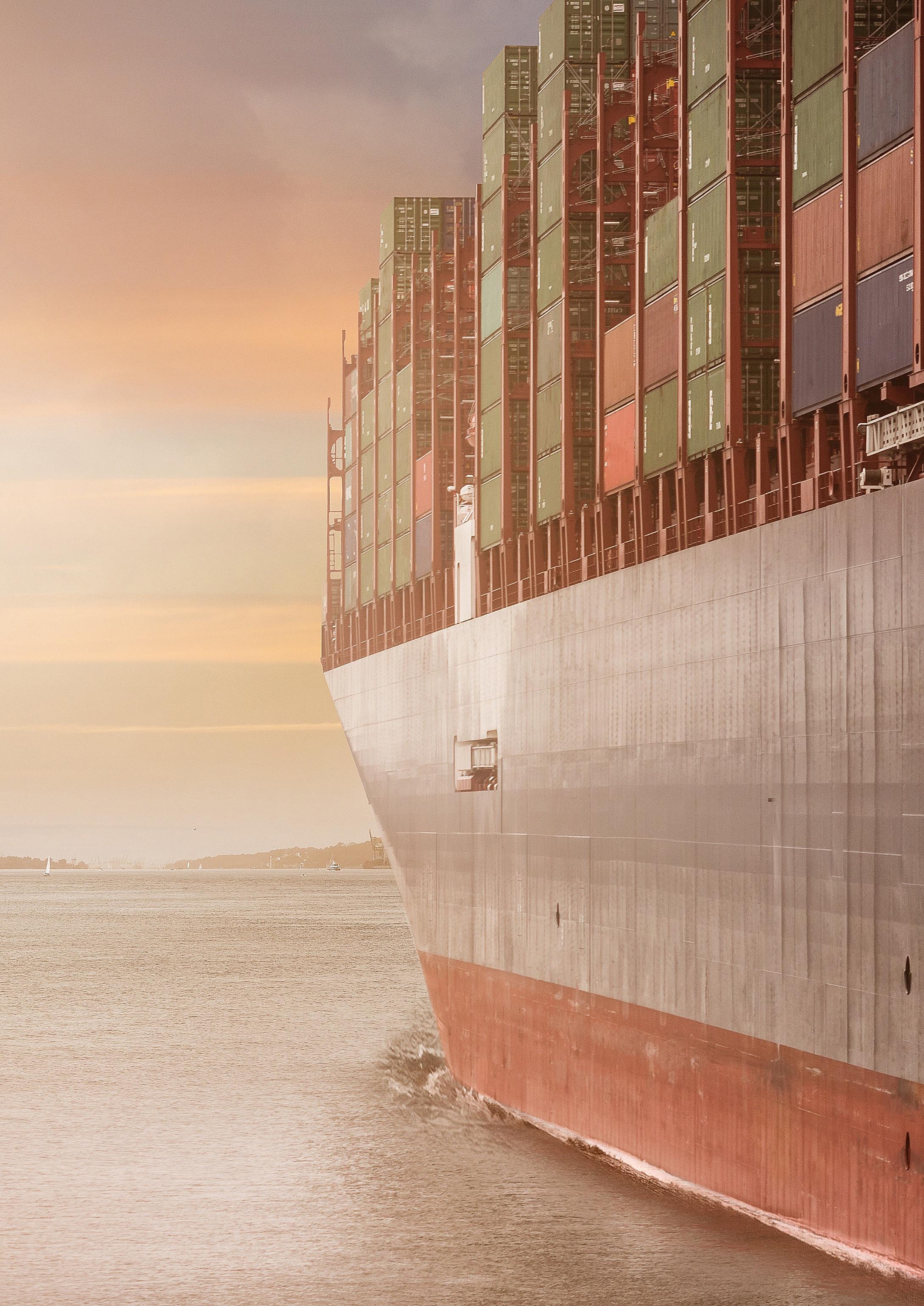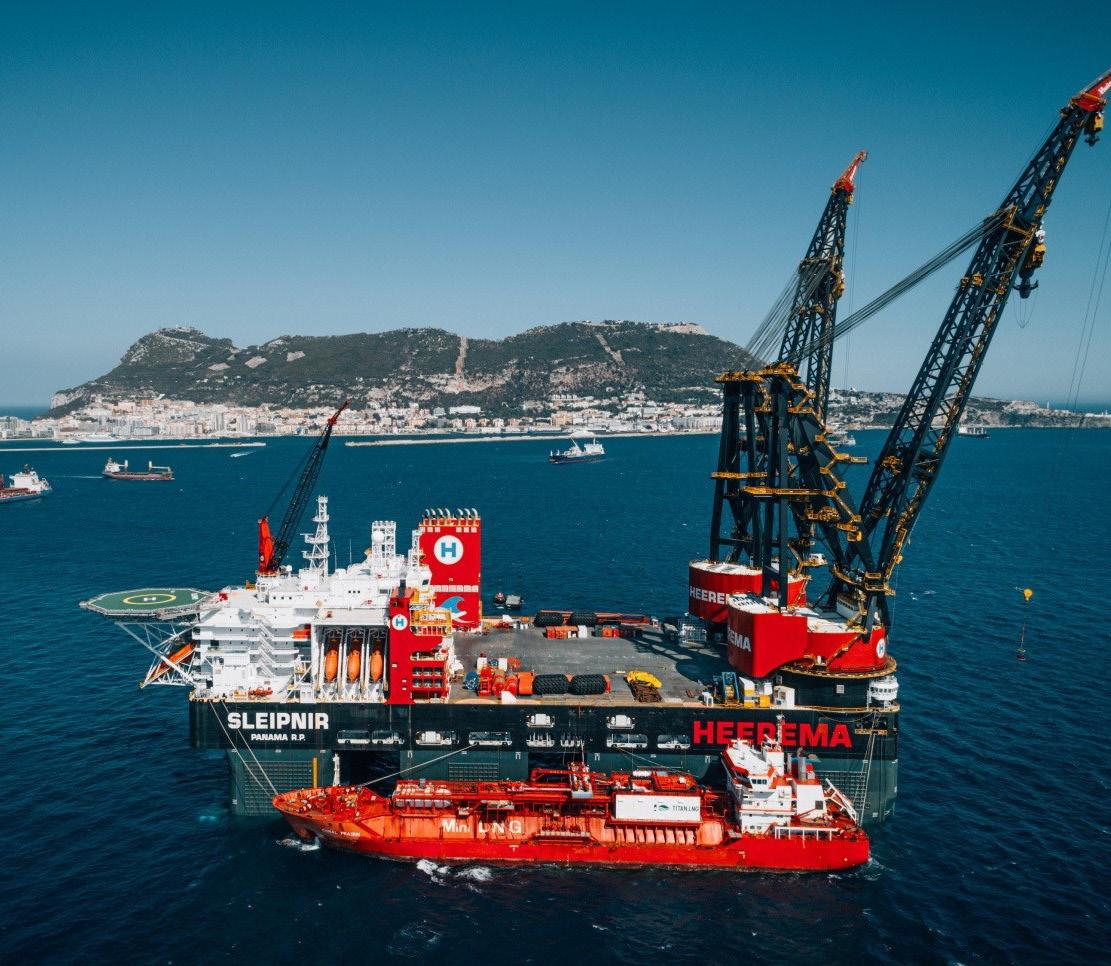
6 minute read
GOING GREEN WITH LNG: NEW FUEL RULES

Feature by Sophie Clifton-Tucker
Advertisement
Director of Little English Language School (Gibraltar), Editor of The Gibraltar Magazine, Editor of Gibraltar Business
As new regulations aimed at reducing emissions are introduced, Gibraltar Business explores one of the shipping industry’s biggest shake-ups in decades, and takes a look at Gibraltar’s preparations to be able to supply liquefied natural gas (LNG) to merchant ships.
On January 1st 2020, a law came into effect banning ships sailing in EU waters from using fuels with a sulphur content above 0.5%; a significant change from the current limit of 3.5% in a move welcomed by regulators and environmental champions alike.
In a parallel move, eight months earlier, Gibraltar prepared to switch from dieselfuelled power generation to cleanerburning, and comparatively more efficient, liquefied natural gas (LNG).
Both these moves reflect the growing alarm that emissions are having on climate change and that governments and regulators have to act decisively to cut pollution levels.
Gibraltar has grown to become one of the largest ports for bunkers (fuel for ships) in Europe. Currently, Gibraltar supplies around 4 million tonnes of bunkers per annum, with Algeciras supplying slightly
less (approx. 3.7 million tonnes). Along with TangierMed and Ceuta, these four ports represent the Straits market for bunkers supplies. Together the Straits market accounts for around 20% of all bunkers supplied in the Mediterranean and Black Sea.
Geography has turned Gibraltar into a convenient pit stop for world shipping.
The regulation for ships to burn low sulphur fuel oil (LSFO) when steaming in European waters may cost ship operators more but there is no alternative. It is one of a number of changes marking the biggest overhaul in the worldwide bunker market in the last 100 years or so, when merchant vessels switched from being powered by coal for steam power to fuel oil/diesel. The next big shift will be to switch from gasoil to LNG. The switch to LNG will take several decades, but is driven by environmental concerns (‘diesel is dirty’) and is backed by strong regulation, particularly from the EU.
Manuel Tirado, CEO and Captain of the Port at the Gibraltar Port Authority (GPA) told Gibraltar Business that the implementation of the sulphur cap

introduced this year will be a major contribution in cutting emissions from ships. “As from January 2020 all vessels must consume fuel with a maximum sulphur content of 0.5%. The Gibraltar Port Authority has ramped up its procedures and inspection regime to ensure that our local suppliers will be delivering compliant fuels. Our operators have worked very hard to be able to have this product and since September 2019 compliant fuel has been available in Gibraltar.
“The maritime world is very conscious of the environment. The fact that shipping has always been branded to be one of the most polluting industries may have been true in the past. However, the industry has looked at ways of reducing its carbon footprint and there are now regulations in place that govern what happens onboard a ship, including the environmental aspect of what fuel is burned in its engines.”
The maritime industry has been looking at greener fuels which reduce emissions as much as possible. Liquefied natural gas is a very good alternative which is safe to use and produces a much cleaner burn. There are a number of shipping companies that are now starting to use this product, and a number of new builds which will be using LNG as a fuel in the future.
As Gibraltar is such a significant port for bunkers it makes a lot of sense to be ready for this developing market. The Gibraltar Government together with the Port Authority have worked very hard in preparing the legal framework to license new LNG suppliers to deliver the product when required. The GPA has also developed an LNG code of practice along with operating procedures to conduct these operations within British Gibraltar Territorial Waters safely and efficiently. “We are ready to deliver,” confirms Mr Tirado.
The maritime industry sees LNG as a transition fuel as it continues to explore other technologies including electric power and hybrid engines, although these alternative energy sources may take some time to be perfected. “As always, the GPA will be monitoring closely what the industry does in order to adapt and move with the times,” he adds.
Looking further ahead, newbuilds are likely to be fuelled by LNG rather than gasoil. “There will be different types of vessels constructed, some will use diesel and others will use LNG. There will also be those vessels which might be a hybrid, like diesel/electric and so on. Gibraltar will have the capability to supply the fuel required,” Tirado informs us. “The Gibraltar Port Authority will continue to monitor the market and the demands, and we will move with the times to apply the new technology always with safety and the environment in mind.”
That is an ambitious target.
Harry Murphy Director of Gib Oil, part of US giant World Fuel Services, confirmed that it is engaged in conventional marine bunkering activities and supplying maximum 0.5% sulphur marine distillate fuels on a physical basis in Gibraltar. “We are 100% compliant with the 2020 legislation for low-sulphur fuel oil,” adding that, “We are not, currently, engaged in any LNG bunkering activities. There is only one licensed entity in Gibraltar for this activity – Shell International, although they currently have no infrastructure in place to supply LNG.”
That said, in August 2019, Gibraltar saw the first-ever supply of LNG bunkers within Gibraltar Territorial Waters and, at the time, the largest LNG bunker supply in Europe, according to Titan LNG. Delivery was made to one of the world’s largest floating cranes, the Panamanian semi-submersible crane vessel (SSCV) Sleipnir. The Dutch-owned offshore heavy lift vessel was refuelled with LNG bunkers, supplied by an LNG carrier Coral Fraseri, (owned by Titan LNG), which had been brought into Gibraltar especially for the job. Certainly a positive operation that bodes well for the future. It also demonstrated that both the government and the relevant authorities in Gibraltar can be nimble and adapt to opportunities when they present themselves.
Gibraltar is slowly but surely adapting in preparation for the structural shifts in bunkering. Looking further ahead, new ships being built will perhaps be powered by alternative fuels such as hydrogen, electric, wind or combination fuels.
On the west Baltic Sea, an electricpowered ferry, the Ellen, operates a daily service to the island of Ærø. Powered entirely by batteries, Ellen has been described as something of a Tesla among ferries. Fully charged, the 60m vessel can sail 22 nautical miles with up to 200 passengers and 30 cars onboard but produces zero emissions. The project received funding from the European Union’s Horizon 2020 research and innovation programme. No doubt an indication of things to come, where we may see a shift from fuel bunkering to electric for ferries, tugs and other short-distance vessels. Current battery technology means that long distances just cannot be sustained with electric powered vessels. Blue water merchant ships would still need to use diesel/gasoil or LNG. Nevertheless, the IMO has set a target to cut ship emissions by 50% of its 2008 level by 2050. That is an ambitious target.
The government needs to issue licences for new LNG suppliers to enter the Gibraltar market, and it will also need to invest in onshore facilities to be able to supply LNG bunkers. It is a huge new potential market for Gibraltar, but given our geography and our existing knowledge and expertise, it is one which could help sustain and develop Gibraltar’s port for decades to come.










